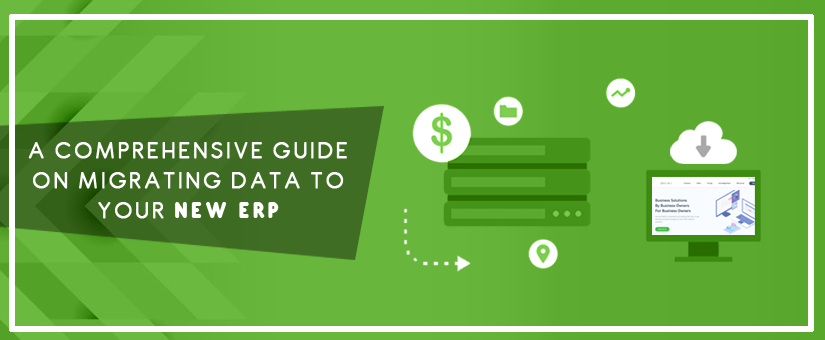The emergence of Enterprise Resource Planning (ERP) as a SaaS platform, has brought about a major change in the way most organizations function. Not only has it improved their inter-departmental collaboration but it has also significantly enhanced employee efficiency and job productivity.
Nonetheless, when it comes to putting in place an ERP solution, a lot of enterprises often find themselves grappling with a wide variety of challenges. One of the major issues that they have to continuously deal with is – Data Migration.
Data Migration, in simple words, is the process of extracting, restructuring, cleansing, reformatting and shifting data from the older technological systems to the new ERP platform. It entails following a systematic approach and a phased migration methodology that triggers the transference of data across various verticals of the ERP landscape.
Here are a few tips to help you undertake successful data migration for your new ERP systems:
1. Prepare A Plan
Before actually beginning with the process of data migration, it is important to have a comprehensive, fail-safe and time bound plan in order. This plan wouldn't just speed up the entire data migration procedure, but it would also work towards reducing intransigent errors and minimizing grave complications.
A detailed migration plan largely consists of the following components:
- Identification of data location, format and sensitivity.
- Development of appropriate data security measures.
- Exhaustive analysis of the source & target systems.
- Creation of testing, mapping and backup protocols.
- Selection of a proficient data conversion/transfer tool.
- Establishment of a flexible implementation timeline.
However, while preparing a plan, it is vital to keep all stakeholders in the loop. A collaboration amidst the interested parties like the enterprise owners, the IT functionaries and the ERP solution vendors, can greatly increase the chances of migration success.
2. Review Your Data
The basic purpose of data migration tends to get defeated if duplicate, unnecessary or inaccurate data finds its way into the new ERP system. This is precisely why conducting a quantitative and qualitative review of your existing data becomes extremely crucial.
For most practical purposes, businesses work with 3 kinds of data:
- Master Data – The core operational data which defines different organizational entities and identifies their attributes.
- Historical Data – Data which has been collected, inventoried and stored for a period of more than two years.
- Current Data– Also called Live data, it includes all records of recent transactions, processes and operations.
To begin with, you need to first assess which type of data has to be migrated and which type can be eliminated altogether. Out of the sets which have to be transferred, an order of priority must be created. This would lead to a complete overhaul of the way data is managed, thus giving you the perfect opportunity to refine and rebuild old data systems.
3. Test, Experiment & Fix
Last but not the least, form a dedicated in-house team to supervise the testing, experimentation and implementation of the data migration process. Give this team complete freedom to determine the:
- Total execution timeline
- Amount of data to be transferred
- Basic conversion outline
- Changes required, if any
- Contingency plans
It would also make sense to assign this team the power to address specific grievances, resolve unforeseen issues and fix migration problems. Furthermore, before going through with the final data migration, start with a small test bunch. See how it loads into the new ERP software. Based on the results obtained, simulate more business operations and run better tests accordingly.
Key Takeaways
Owing to its ability to streamline day-to-day operations and workflows, enterprise resource planning is currently being deployed in various industry circles across the world. In fact, the ERP software market revenues have lately been witnessing an unprecedented rise. Going by the present trends, they are expected to touch an overwhelming figure of $86,000 million by 2022. In such an environ, handling the complexities involved in the data migration process requires diligence, expertise and experience. This is precisely what digital platforms like ZenScale aim to provide.
ZenScale empowers businesses by helping them craft a well-defined migration strategy that harbours the potential of performing efficient data transfer, avoiding expensive budget overruns and deriving relevant, clean data.
To know more about how the modular, reliable and innovative tool-sets of ZenScale can transform your business, click here.
